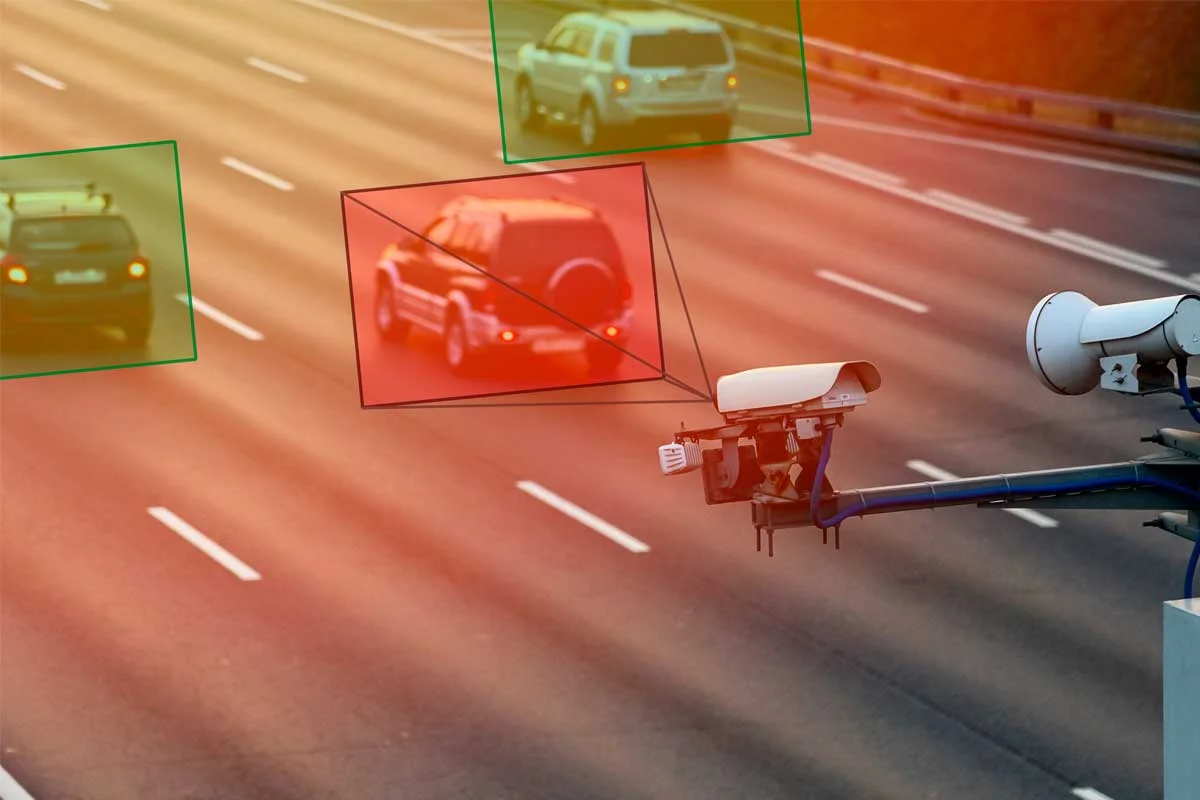
How many hours do you spend in traffic a year? Probably more than you realize. While a few minutes every day might not seem like a lot at the moment, it adds up over time. According to transportation analytics firm INRIX, the average U.S. motorist spent 51 hours in traffic in 20221. That’s more than an entire workweek. The same study found that traffic jams cost U.S. drivers more than $81 billion during 2022. Long story short, traffic is a major drain on consumers’ time and resources.
The good news? Innovations in the Internet of Things (IoT) and artificial intelligence (AI) have paved the way for new solutions that would introduce smarter traffic mitigation and make the roads safer. From accident detection to traffic light management, AI offers the transportation industry a range of opportunities to beat the traffic. In this article, we’ll outline how the intersection of AI and IoT can optimize road operations and ultimately give people their time and money back.
Tech Innovations for Traffic Optimization
While the use of AI in traffic management is still in its early stages, a range of applications already allows for real-time monitoring and predictive analytics. Below, we outline key tech innovations that are making traffic innovation possible.
Flow Sensors
Traffic management has traditionally operated on a fixed schedule. Now, AI-powered sensors can be deployed in streets to monitor demand and adapt traffic signals based on shifts to optimize the flow. These sensors ultimately reduce congestion during peak times by prioritizing high-traffic roads.
Predictive Monitors
With mounds of historical and real-time data, traffic monitors can be trained to understand traffic patterns and predict traffic flow at a given time. This can be used to forecast future conditions so that traffic personnel can better allocate resources, optimize routes, and adjust traffic signals.
Incident Monitors
AI-powered monitors can be deployed to watch for and identify traffic incidents, including accidents, speeding, or blockages. If detected, this data can be sent to the correct parties to dispatch support and resolve hold-ups more quickly.
Players Leading AI-Powered Traffic Management
So, what companies are fueling this innovation…and how? Below, we examine several leaders in AI-powered traffic management and their real-world applications.
INRIX
INRIX offers instantaneous real-time traffic conditions, pinpointing traffic speeds in different lanes and delivering accurate ETAs for any road in the world, including interstates, country roads, and intersections 2. Additionally, they leverage vast datasets to provide insights into problem areas and trends in traffic conditions that can help users get back more of their time or allow the transportation aspect of businesses to run more profitably.
Canon
Canon, one of the top manufacturers of consumer cameras, is leading the trend in support of computer vision technology that can be used in traffic mitigation with its complementary metal oxide semiconductor (CMOS) sensors3. The Canon CMOS sensors are highly sensitive and power-accurate imaging for traffic management automation. They can provide clarity in different light conditions and with varying speeds of objects, which can help governments calibrate their traffic signal coordination for ramp meters and red-light cameras.

Miovision
Miovision collects multimodal traffic data and delivers actionable, real-time insights for urban grids and corridors4. This second-by-second response to dynamic conditions eliminates driver stops, reduces wait time, and improves travel speeds. The result is less congested roads and even reduced CO2 emissions as there won’t be as many automobiles on the road.
Challenges in AI-Powered Traffic Management
With any new technology, there are challenges to widespread adoption that can only be addressed with time. Let’s examine challenges in AI-powered traffic management.
Privacy
Privacy must remain at the forefront of all traffic management technology to ensure industry and consumer buy-in. Data and imaging collected on the roads must be anonymous and protected, including compliance with global privacy regulations.
Energy Efficiency
Like many battery-powered IoT devices, traffic monitors and sensors have limitations when it comes to energy efficiency. To process large amounts of data, these devices require significant processing power and, thus, battery power. Implementing these technologies shouldn’t require several battery changes throughout the week.
Accuracy
As with any device placed outdoors, there’s a high likelihood that external factors, such as earthquakes, storms, and extreme weather conditions, can impact device accuracy and, ultimately, the intelligence of those devices. Additionally, these devices are tracking moving objects, which presents an accuracy challenge within itself. Continued development and processing power could help offset some of these constraints.
The Future of AI-Powered Traffic Management
The intersection of AI and IoT is already facilitating easier and faster coordination across the range of systems contributing to traffic operations. As adoption increases, these enhanced sensors and monitors will ultimately be fully interoperable, allowing for greater optimization down the line.
How Ambiq is Contributing
Sophisticated sensors and monitors that can reduce the dread of driving in traffic is a win for motorists, granted these devices can overcome the energy challenges associated with them. Fortunately, Ambiq, specializes in creating ultra-low power system-on-chips (SoCs) that provide long-lasting battery life and processes complex data with greater energy efficiency. Continuous monitoring is possible, and these innovations will allow cities to become more effective in managing traffic conditions for drivers.
Sources:
1 Cities where motorists lose the most time and money | August 2023
2 Real Time Traffic Data [Powered by Artificial Intelligence] | INRIX | 2023
3 Why Choose Canon CMOS Sensors | Canon USA | 2023
4 Miovision TrafficLink – Smart cities start with smart signals | 2023


